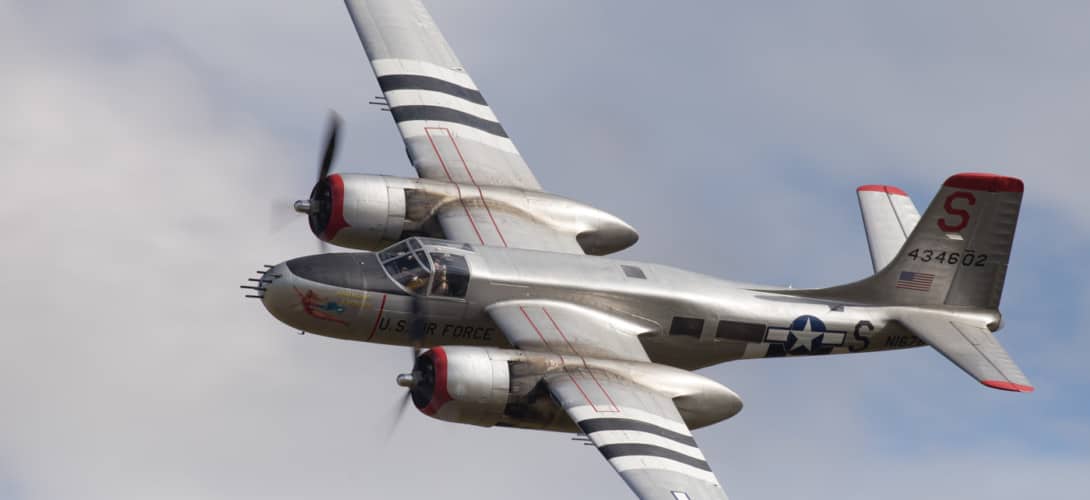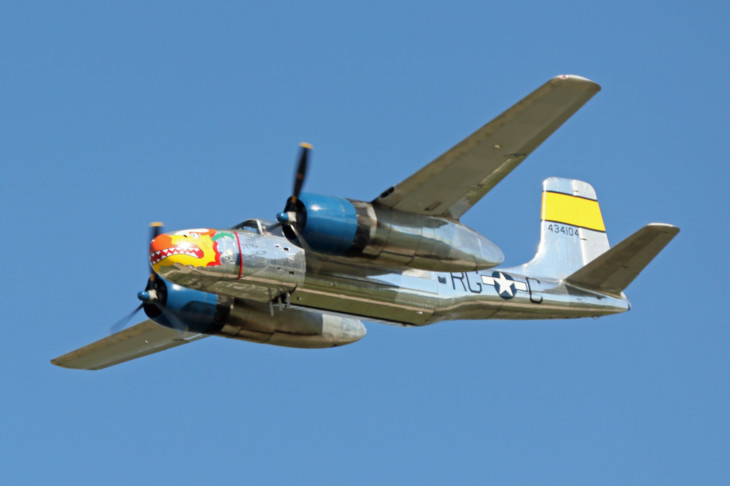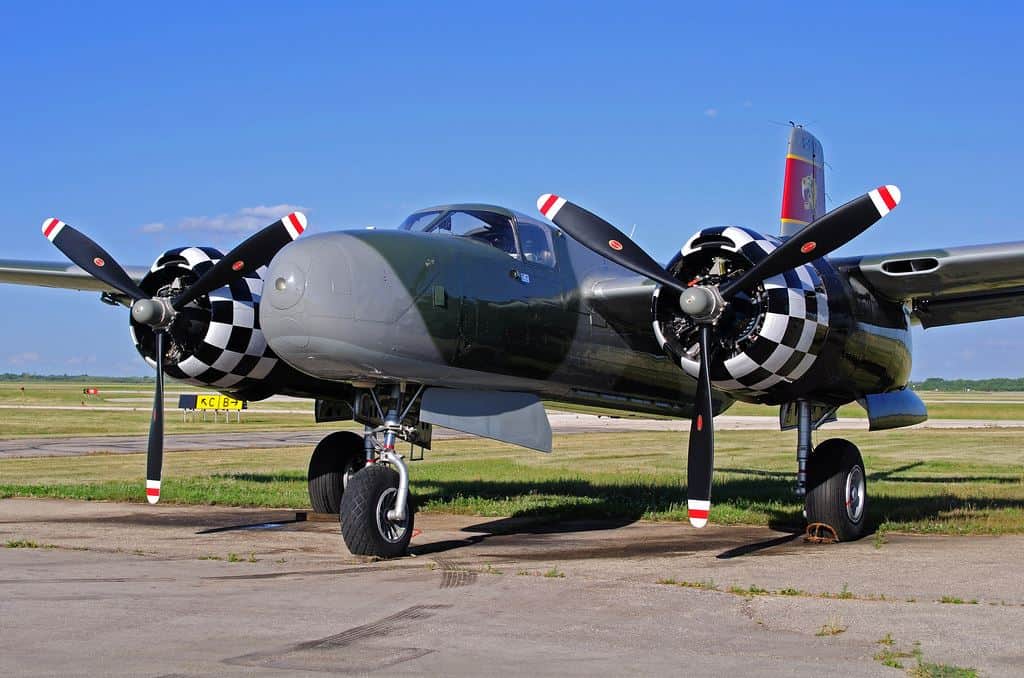The A-26 Invader: Unmatched Versatility
The Development History
The A-26 Invader
First introduced to the world in July 1942, the Douglas A-26 Invader stood as a testament to engineering prowess and versatility. The need for a fast, nimble bomber drove the engineers at Douglas Aircraft Company. They aimed to craft an aircraft with these attributes while also retaining the ability to carry a substantial payload. Thus, the Douglas A-26 Invader was born. Chief Designer Ed Heinemann led the ambitious project, navigating the stormy seas of technical challenges and design revisions.

Much of the Invader’s outstanding performance was thanks to its twin Pratt & Whitney R-2800 Double Wasp engines. Each of these powerhouses boasted 18 cylinders and an impressive output of 2,000 horsepower. This allowed the A-26 to fly at speeds up to 355 mph, a considerable improvement over previous bomber models. But raw power wasn’t the only thing these engines offered. They were reliable and resilient, giving the A-26 the strength to dive into the most heated combat zones and come out victorious.

Flight Characteristics
Flying the A-26 was an experience pilots often compared to dancing with the clouds. Despite its considerable size, the Invader displayed nimbleness and agility that defied expectations. Its large wing area allowed for a lower wing loading, which, coupled with its potent engines, provided impressive high-speed performance and maneuverability. The hydraulic-powered control surfaces ensured smooth handling, while the tricycle landing gear setup made take-offs and landings easier than in tailwheel designs. These characteristics combined to make the A-26 a versatile and formidable aircraft in a wide range of missions.

From World War II to the Cold War
In the Pacific theater during World War II, the A-26 made its combat debut. It swiftly established itself as a formidable warrior, showcasing resilience under heavy enemy assault and effectively delivering catastrophic blows to its targets. When peace briefly reigned, the Invader’s mission evolved.

It served as a fast reconnaissance platform and a guerrilla warfare aircraft during the early stages of the Cold War. The Invader also saw significant action in Korea and Vietnam, reinforcing its reputation as a reliable and adaptable tool in the military aviation arsenal.

The Redesignation Controversy
In 1948, the US Air Force redesignated the A-26 as the B-26, causing significant confusion. The Martin B-26 Marauder, a distinct medium bomber, had already been in service since November 1940, predating the Douglas design by 20 months. This renaming led to many mix-ups in service records, operational reports, and maintenance logs, leaving a bewildering legacy in the annals of aviation history.

Hits: 12







